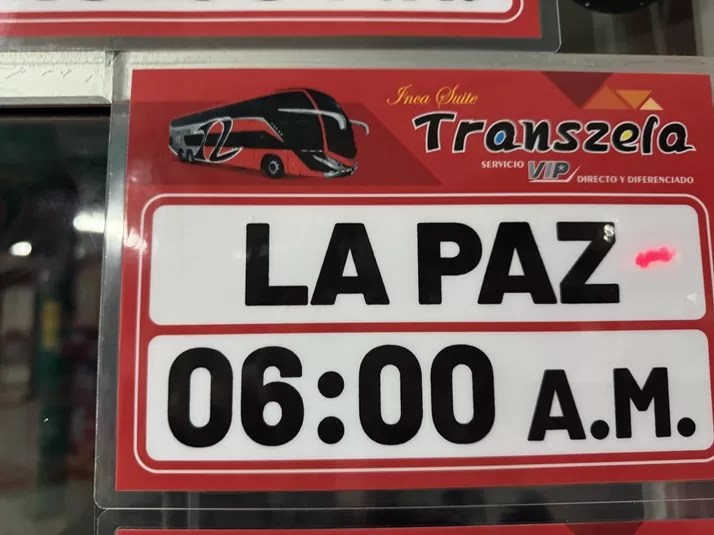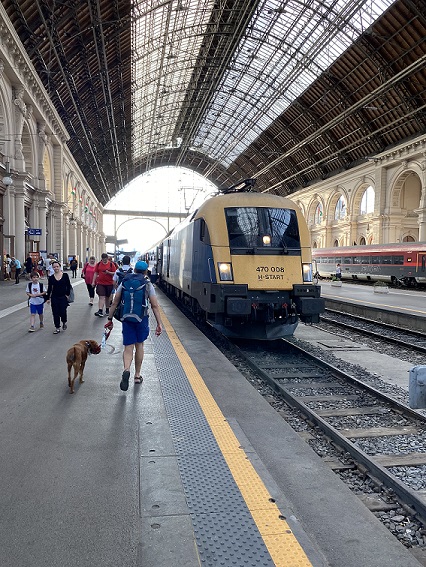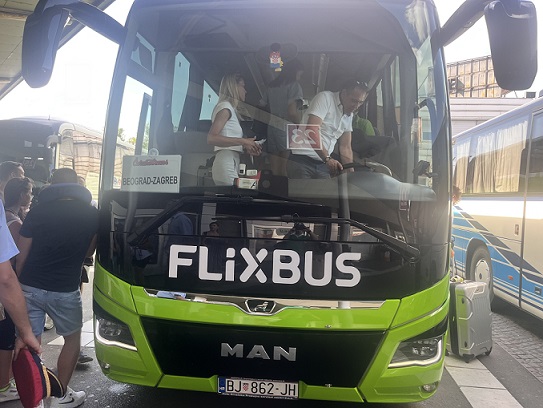Our original plan was to travel around the entire of South America, and crossing all the land borders. This fell apart when we couldn’t cross the land border between Colombia and Ecuador. This meant getting from Peru to Bolivia, Puno to La Paz, was the first land border we crossed in South America.
It was also my 40th birthday, feel free to buy me a beer by clicking the ‘Buy me a coffee‘ link :-).
The route we took
Booking your travel from Peru to Bolivia, Puno to La Paz.
There are any number of ways to book your bus travel in South America, we used busbud.com for this portion of the trip. We found them really easy to use and booking confirmation was nearly instant. If you are feeling brave enough, you can also book at the station itself, there are tons of bus companies doing this route. However, you take the risk of bus being full and you being stuck.
What did we need to exit Peru and enter Bolivia?
Again, this is for a British passport holder.
-
- Valid passport with 6 months left on it.
- Space for your entry and exit stamps.
- Proof of first-night accommodation in Bolivia. Although this was not asked for.
Check with your embassy to see what your need.
The journey from Peru to Bolivia, Puno to La Paz
Journey to the border
Our bus left from the main bus terminal; it is about a 10 to 15 minute walk from the area where all the hotels were in Puno. We arrived early, as we had to exchange our online tickets for paper tickets. This is a pain, but it has to be done if booked online. You save zero time and only a slight bit of money by booking online.

Puno bus station is like every other station in South America, filled with ticket offices and expensive shops. We bought a beer and a pack of biscuits as it was my birthday.
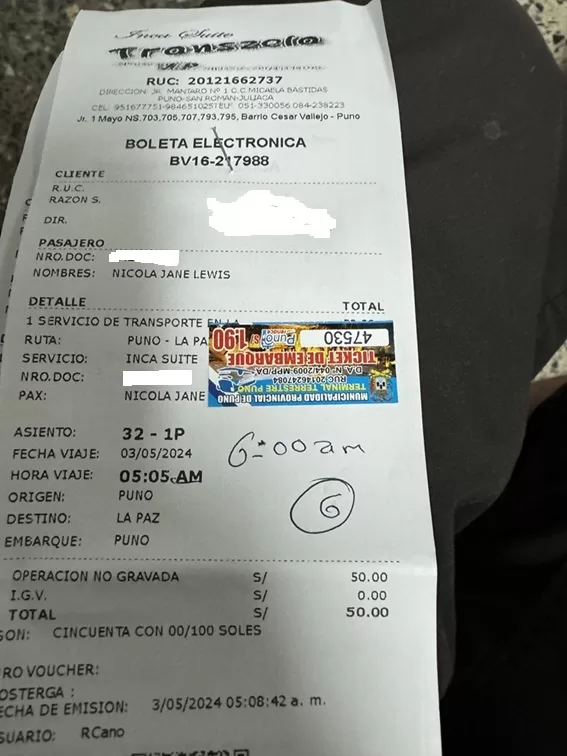
We had to purchase a terminal fee ticket; these cost 1.90 sols (41 pence each). I don’t like paying for these, as you get absolutely nothing for them.
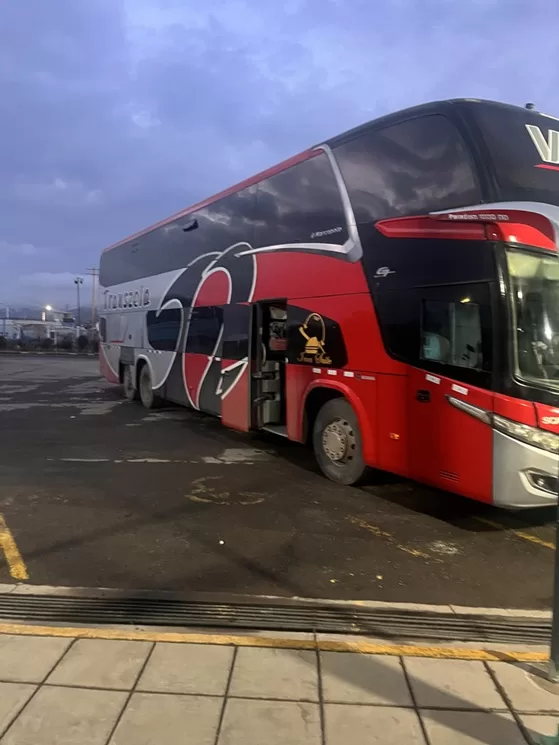
Our bus left from platform 6, and unsurprisingly, it left later than planned. Well, our online bus ticket time was wrong to start with, so it was about 45 minutes later than we thought.
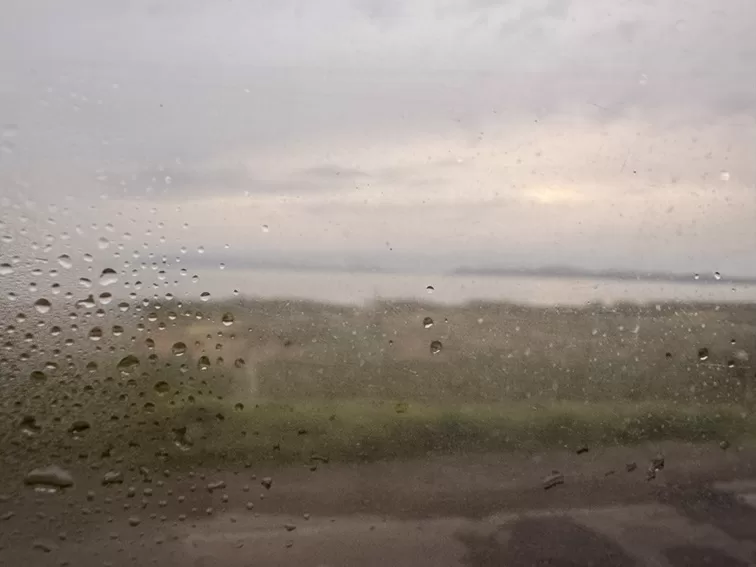
The weather wasn’t great, and the roads were really muddy. This meant the windows were stinking, so I didn’t get many photos as we passed Lake Titicaca.
I enjoyed my birthday beer and buscuit. Then got a surprise that we needed to fill out an online customs form with no WiFi or data. This wasn’t even asked for at the border.
About 15 minutes before the border, we stopped at a rest stop where we could change money if we wanted.
Arriving at the border – Desguadero.

When we arrived, rumours were going around that this would take about 2 hours. That rumour was false, and we were through both borders, security, and back on the bus in 45 minutes. It would have been shorter if only I had managed to hold everyone up for 15 minutes (story for another time!).
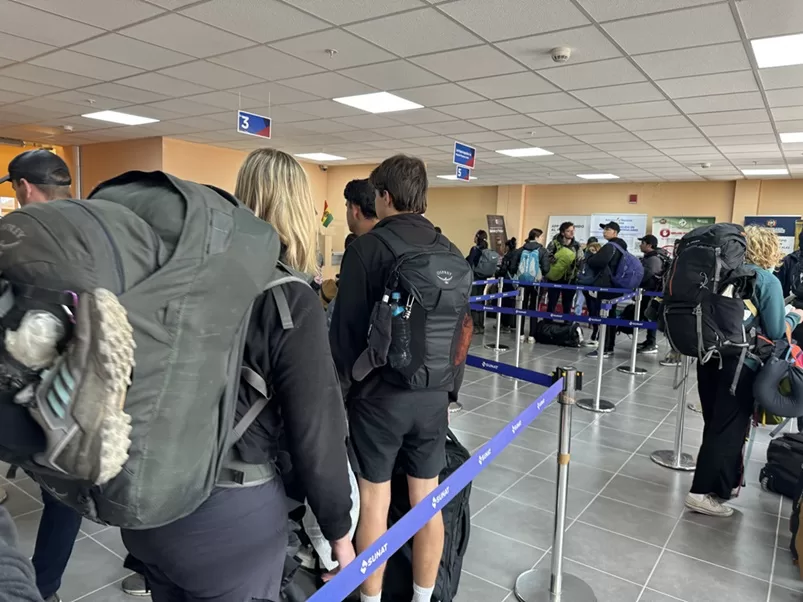
The border is really well done; everything is in the same room. We first went to the Peru exit (where I held everyone up), got our exit stamps.
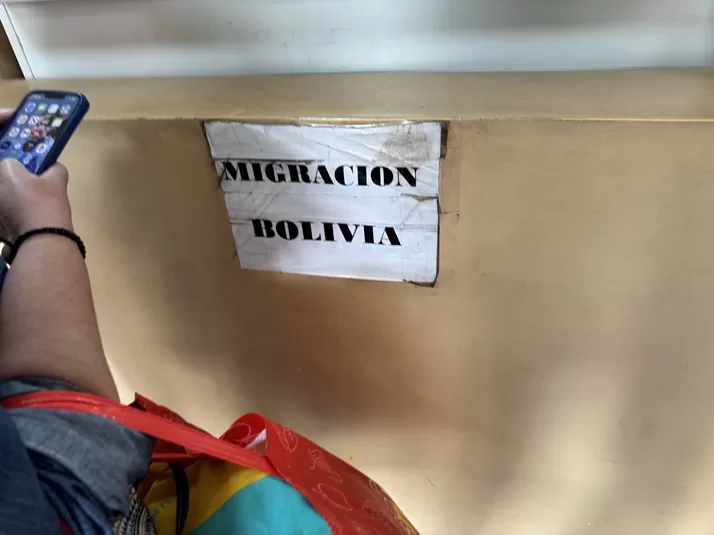
Then joined the queue for Bolivia entry (which was empty when we got there!). Really, really simple.
We then went through security, which was like airport security with lots of police standing around. I’m not sure if it still is, but it used to be a major drug trafficking route, hence the checks. No issues for us, and we entered country no. 50 as a family—Bolivia.
Then onto the bus, and off we went. A tour guide from another group said the previous days bus arrived there at the same time as us and was there for 4 hours. We were very lucky and got through in record time.
Journey to the bus terminal in La Paz.
The journey through Bolivia to La Paz was pretty uneventful. We went through a couple of army checks; they did a quick search of the luggage area of the bus, and on we went.

I enjoyed watching the world go by while my window was minging and had a logo across it. I did get to see Bolivia and its vast plains, and I was very surprised by that.
Making excellent time and arriving in El Alto at 1:30 p.m., everyone was happy, then disaster struck.
Our bus had to cut through El Alto, but there was a huge protest, with loads of police around and all major roads closed. Our driver decided he wouldn’t be able to get down the side road (he wasn’t wrong, as we later found out).
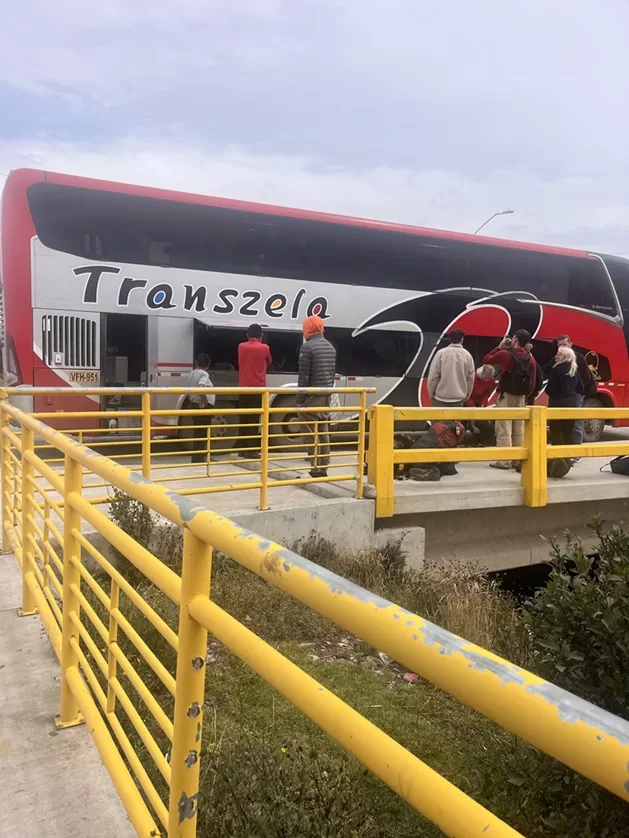
The bus turned, and we stopped at a roundabout outside of the city.
This is when problems started; all the tour groups got sorted out by their guides, and mini buses turned up in no time for them. A few groups who spoke Spanish jumped into passing taxis and made their way. This left 5 of us. Nicola was trying to get an Uber into the city, but none would come due to the protests. The bus steward told us to get a taxi, but none of us had cash. In the end, the company relented and paid for a taxi to the drop-off place, the bus station from ‘Race across the World’. They weren’t very forthcoming in doing this, but we had paid to get there, so they had to get us there.
Thoughts on the journey.
Apart from the incident at El Alto, the rest of the journey was simple and straightforward. Now, we know there was a lot of luck for us, with the border being very busy the day before. The bus was comfortable and stopped when required. If you ever plan to go from Puno to La Plaz, we would have no issue recommending using a bus. There are other options, like going from Puno to Bolivia by boat or flying, but this was straightforward and quick.
If you have any questions about the journey or any other border crossings we have done, feel free to ask.
Thanks for taking the time to read about our journey from Peru to Bolivia, Puno to La Paz.
The Lewis family.


